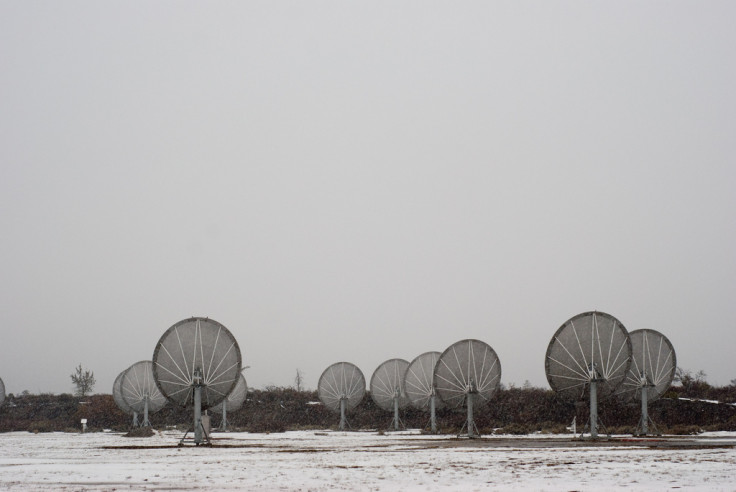Alien megastructures: Seti finds no radio signals from KIC 8462852 but won't rule out civilisation

Seti astronomers have found no evidence of radio signals coming from the possible "alien megastructure" in the star system KIC 8462852. The Search for Extraterrestrial Intelligence carried out observations of the system using the Allen Telescope Array between 15 and 30 October.
The idea of a megastructure around the star was raised last month after scientists noticed unusual dimming. Something appeared to be blocking about 20% of the light from the star at irregular intervals – a planet normally blocks about 1% and would pass the star (blocking the light) at regular intervals.
As a result, several theories about what it could be were raised. One of these was that of an alien megastructure being used to harness energy from the star. The idea for such a megastructure was put forward by Freeman Dyson in the 1960s, where he theorised that an extremely advanced alien civilisation would need a lot of energy. The sun being the most abundant source in the solar system would be the obvious target for civilisations with the technology to harness it.
Following the discovery, Seti said the find warranted further investigation. In its latest report, Seti scientists wrote: "The unusual star KIC 8462852 studied by the Kepler space telescope is a main-sequence F3 star at a distance of 454 pc that appears to have a large quantity of matter orbiting quickly about it.
"Although natural explanations should be favoured; e.g., a constellation of comets disrupted by a passing star, or gravitational darkening of an oblate star, it is interesting to speculate that the occluding matter might signal the presence of massive astroengineering projects constructed in the vicinity of KIC 8462582. Several motivations have been proposed for extraterrestrial civilisations to create megastructures orbiting their home stars.

"First, swarms of solar panels could serve to capture starlight as a source of sustainable energy. Such structures may be betrayed via reradiated starlight at infrared wavelengths. Alternatively, large-scale structures might be built to serve as possible habitats or as long-lived beacons to signal the existence of such civilizations to technologically advanced life in other star systems by occluding starlight in a manner not characteristic of natural orbiting bodies."
Seti began observing the system for radio frequencies between 1-10 GHz. They observed the star for more than two weeks using 20 antennas for about 12 hours per day. They did this based on conceptual scenarios for an alien transmitter.
"For the narrowband search, the archetypal transmitter is an intentional beacon directed toward the Earth with the specific goal of announcing an extraterrestrial presence. The second archetype is incidental radiation resulting from propulsion by powerful, beamed microwave transmitters. In this case, the suggestion is that if the matter occluding the star is actually due to extensive megastructures, then microwave-driven spacecraft to service these structures could inadvertently be revealed by a powerful, wide bandwidth signal."
Their observations revealed no radio signals in the narrowband or wideband signal searches in the frequency ranges they used. However, astronomers say this does not necessarily put to bed the idea of an advanced civilisation: "Clearly, the energy demands for a detectable signal from KIC 8462852 are far higher than this terrestrial example (largely as a consequence of the distance of this star).
"On the other hand, these energy requirements could be very substantially reduced if the emissions were beamed in our direction. Additionally, it's worth noting that any society able to construct a Dyson swarm will have an abundant energy source, as the star furnishes energy at a level of ~1027 watts. This report represents a first survey placing upper limits on anomalous flux from KIC 8462852. We expect that this star will be the object of additional observations for years to come."
© Copyright IBTimes 2025. All rights reserved.






















